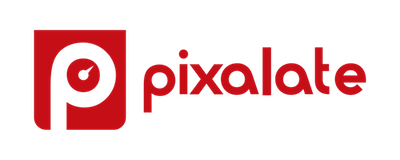LONDON, Oct. 16, 2024 (Globe Newswire) — Pixalatethe market-leading fraud prevention, privacy, and compliance analytics platform for connected TV (CTV) and mobile advertising, today announced the Top 10 Ad Fraud Types for Connected TV (CTV) for September 2024. amazon fire tv, Roku, apple tvand samsung smart tv.
This report covers invalid traffic (IVT) and ad fraud measured across the CTV app store, including the number of individual apps affected and the share of audio for each IVT type. The report also revealed the top 10 apps with the highest IVT rates in each app store in September 2024, according to Pixalate data.
To compile this series of research, Pixalate’s data science team collected more than 1.9 million open programmatic ad impressions and 5,500 mapped impressions across Roku, Amazon Fire TV, Apple TV, and Samsung TV in September 2024. We analyzed CTV apps. The IVT type is rated ‘Most Common’ according to the percentage of invalid traffic within each CTV app store, according to Pixalate’s methodology.
Most common types of ad fraud in CTV apps in September 2024, measured by Pixalate
- Amazon Fire TV: App spoofing Found to be the most common IVT type in Traffic SOV, accounting for 45% of all IVTs and impacting 843 apps
- ‘KBTX News‘ According to data from Pixalate, apps had the highest IVT rate at 49% in September 2024.
- apple tv: App spoofing Accounted for 47% of IVTs and affected the most apps (544)
- ‘advocate channelAccording to Pixalate data, September 2024 had the highest IVT rate (48%) across the platform.
- samsung smart tv: Proxy IVT Samsung smart TV apps overall account for 52% of IVT, and app spoofing accounts for 40% of IVT
- 247 apps affected by app spoofing
- ‘luxury lifeAccording to Pixalate data, September 2024 had the highest IVT rate (17%)
- Roku: App spoofing Accounts for 48% of IVT and affects 2,552 apps
For the purposes of this report, “bundle ID (app) spoofing” refers to impressions where the app ID reported to the exchange does not match the app characteristics detected by Pixalate. “Proxy” is defined as an impression from an intermediate proxy device that exists to manipulate traffic numbers, pass non-human or invalid traffic, or not comply with protocols. For more information on IVT types, please visit: Pixalate’s IVT Knowledge Base.
Top CTV ad fraud types by platform
Pixalate is MRC certified for advanced invalid traffic (SIVT) detection and filtering across desktop and mobile web, mobile in-app, and connected TV (CTV). Find all Pixalate’s MRC certified measurement areas here.
For more information on IVT types, please visit: Pixalate’s IVT Knowledge Base.
About Pixalate
Pixalate is a global platform specializing in privacy compliance, ad fraud prevention, and data intelligence for the digital advertising supply chain. Founded in 2012, Pixalate is trusted by regulators, data researchers, advertisers, publishers, ad tech platforms, and financial analysts across the connected TV (CTV), mobile app, and website ecosystems. Pixalate is certified by MRC for Advanced Invalid Traffic (SIVT) detection and filtering. pixalate.com
Disclaimer
The contents of this press release, as well as CTV’s Most Common Ad Fraud and IVT Types Reports, reflect Pixalate’s opinion regarding factors that Pixalate believes are beneficial to the digital media industry. All data shared is based on Pixalate’s proprietary technology and analysis, which Pixalate continually evaluates and updates. Any references to external sources should not be construed as recommendations. Pixalate opinions are opinions only and are neither facts nor guarantees. Pixalate does not share this data to harm the standing or reputation of any organization, person, or app, but instead to report findings and trends for the time period studied. According to the Media Rating Council (MRC), “’Invalid traffic’ generally refers to traffic that does not meet specific ad delivery quality or integrity standards, or legitimate ad traffic that should be included in measurement counts. Ad traffic is considered invalid because it is the result of non-human traffic (spiders, bots, etc.) or activity designed to generate fraudulent traffic. ” When traffic characteristics suggest misleading intent, such IVT is often referred to as “ad fraud.” Additionally, according to the MRC, “’Fraud’ is intended to refer to fraud as defined in various statutes, statutes, and ordinances, or as traditionally used in courts and other legal proceedings in the United States. It is a unique definition strictly for advertising measurement purposes.



